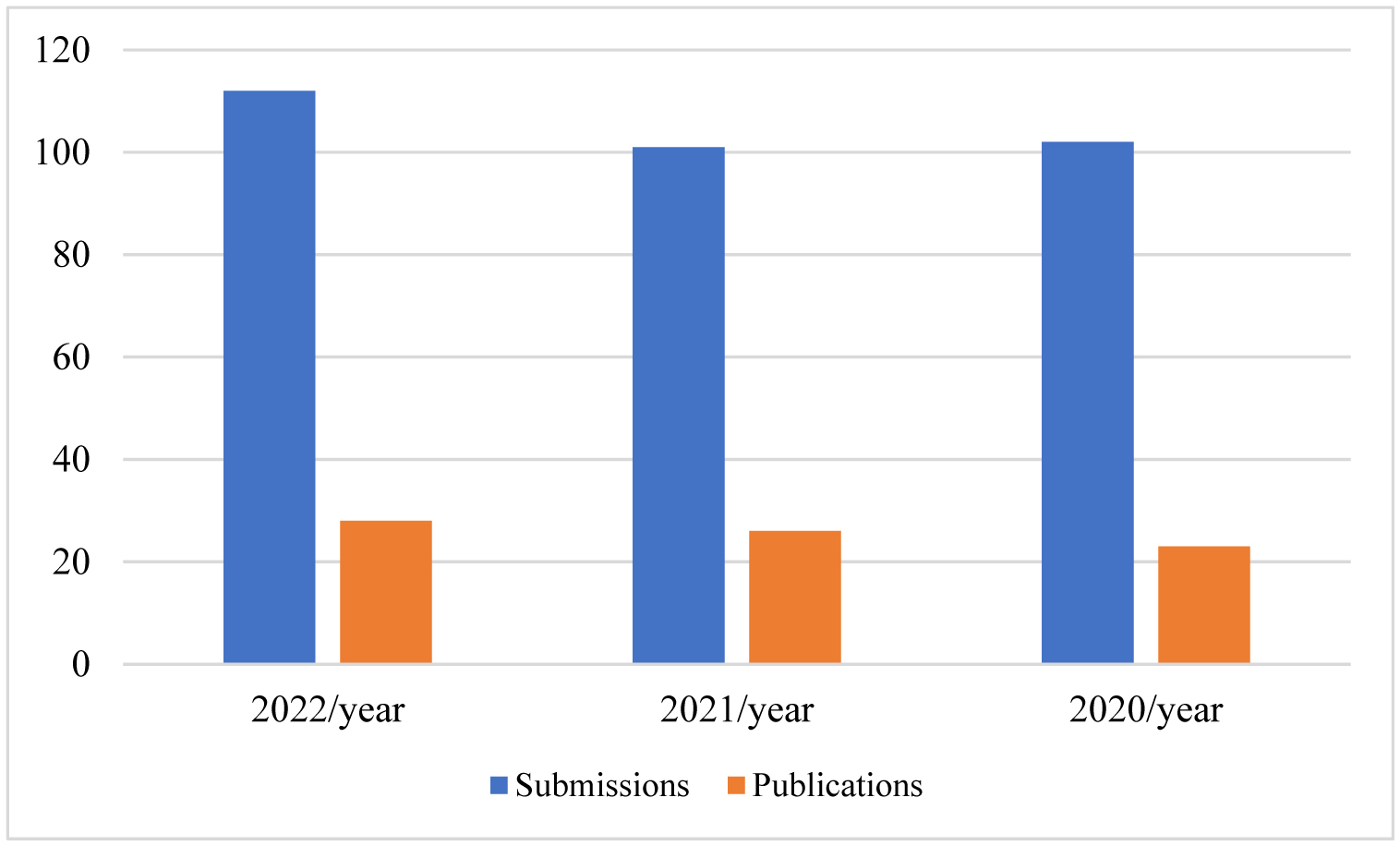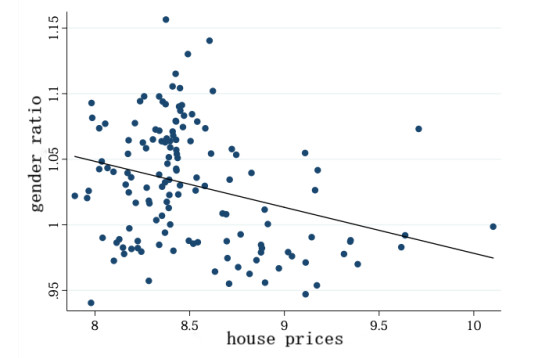|
[1]
|
H. Han, Trends in educational assortative marriage in China from 1970 to 2000, Demographic Res., 22 (2010), 733–770. https://doi.org/10.4054/DemRes.2010.22.24 doi: 10.4054/DemRes.2010.22.24

|
|
[2]
|
J. Smits, H. Park, Five decades of educational assortative mating in 10 East Asian societies, Soc. Forces, 88 (2009), 227–255. https://doi.org/10.1353/sof.0.0241 doi: 10.1353/sof.0.0241

|
|
[3]
|
X. Xu, J. Ji, Y. Y. Tung, Social and political assortative mating in urban China, J. Fam. Issues, 21 (2000), 47–77. https://doi.org/10.1177/019251300021001003 doi: 10.1177/019251300021001003

|
|
[4]
|
Z. Mu, Y. Xie, Marital age homogamy in China: a reversal of trend in the reform era, Soc. Sci. Res., 44 (2014), 141–157. https://doi.org/10.1016/j.ssresearch.2013.11.005 doi: 10.1016/j.ssresearch.2013.11.005

|
|
[5]
|
K. K. Charles, E. Hurst, A. Killewald, Marital sorting and parental wealth, Demography, 50 (2012), 51–70. https://doi.org/10.1007/s13524-012-0144-6 doi: 10.1007/s13524-012-0144-6

|
|
[6]
|
A. J. Plantinga, C. Détang-Dessendre, G. L. Hunt, V. Piguet, Housing prices and inter-urban migration, Reg. Sci. Urban Econ., 43 (2013), 296–306. https://doi.org/10.1016/j.regsciurbeco.2012.07.009 doi: 10.1016/j.regsciurbeco.2012.07.009

|
|
[7]
|
J. Graham, C. A. Makridis, House prices and consumption: a new instrumental variables approach, Amer. Econ. J.: Macroecon., 15 (2023), 411–443. https://doi.org/10.1257/mac.20200246 doi: 10.1257/mac.20200246

|
|
[8]
|
C. W. Peng, I. C. Tsai, The long- and short-run influences of housing prices on migration, Cities. 93 (2019), 253–262. https://doi.org/10.1016/j.cities.2019.05.011 doi: 10.1016/j.cities.2019.05.011

|
|
[9]
|
L. J. Dettling, M. S. Kearney, House prices and birth rates: the impact of the real estate market on the decision to have a baby, J. Public Econ., 110 (2014), 82–100. https://doi.org/10.1016/j.jpubeco.2013.09.009 doi: 10.1016/j.jpubeco.2013.09.009

|
|
[10]
|
G. S. Becker, A theory of marriage: part Ⅰ, J. Politic. Econ., 81 (1973), 813–846. https://doi.org/10.1086/260084 doi: 10.1086/260084

|
|
[11]
|
G. S. Becker, A theory of marriage: part Ⅱ, J. Political Econ., 82 (1973), S11–S26.
|
|
[12]
|
S. Sargeson, Subduing "The rural house-building craze": attitudes towards housing construction and land use controls in four Zhejiang villages, China Quart., 172 (2002), 927–955. https://doi.org/10.1017/S0009443902000566 doi: 10.1017/S0009443902000566

|
|
[13]
|
J. M. Raymo, Y. Xie, Temporal and regional variation in the strength of educational homogamy, Amer. Sociol. Rev., 65 (2000), 773–781. https://doi.org/10.1177/000312240006500508 doi: 10.1177/000312240006500508

|
|
[14]
|
D. H. Wrenn, J. Yi, B. Zhang, House prices and marriage entry in China, Reg. Sci. Urban Econ., 74 (2019), 118–130. https://doi.org/10.1016/j.regsciurbeco.2018.12.001 doi: 10.1016/j.regsciurbeco.2018.12.001

|
|
[15]
|
M. Farnham, L. Schmidt, P. Sevak, House prices and marital stability, Amer. Econ. Rew., 101 (2011), 615–619. https://doi.org/10.1257/aer.101.3.615 doi: 10.1257/aer.101.3.615

|
|
[16]
|
D. Lam, Marriage markets and assortative mating with household public goods: theoretical results and empirical implications, J. Hum. Resour., 23 (1988), 462–487. https://doi.org/10.2307/145809 doi: 10.2307/145809

|
|
[17]
|
K. Basu, Gender and say: a model of household behaviour with endogenously determined balance of power, Econ. J., 116 (2006), 558–580. https://doi.org/10.1111/j.1468-0297.2006.01092.x doi: 10.1111/j.1468-0297.2006.01092.x

|
|
[18]
|
A. Sun, Q. Zhang, Who marries whom in a surging housing market, J. Dev. Econ., 146 (2020), 102492. https://doi.org/10.1016/j.jdeveco.2020.102492 doi: 10.1016/j.jdeveco.2020.102492

|
|
[19]
|
D. Gray, Housing market activity diffusion in England and Wales, Natl. Account. Rev., 5 (2023), 125–144. https://doi.org/10.3934/NAR.2023008 doi: 10.3934/NAR.2023008

|
|
[20]
|
Z. Li, J. Zhong, Impact of economic policy uncertainty shocks on China's financial conditions, Financ. Res. Lett., 35 (2020), 101303. https://doi.org/10.1016/j.frl.2019.101303 doi: 10.1016/j.frl.2019.101303

|
|
[21]
|
Z. Li, C. Yang, Z. Huang, How does the fintech sector react to signals from central bank digital currencies, Financ. Res. Lett., 50 (2022), 103308. https://doi.org/10.1016/j.frl.2022.103308 doi: 10.1016/j.frl.2022.103308

|
|
[22]
|
Z. Dong, E. C. M. Hui, S. Jia, How does housing price affect consumption in China: wealth effect or substitution effect, Cities, 64 (2017), 1–8. https://doi.org/10.1016/j.cities.2017.01.006 doi: 10.1016/j.cities.2017.01.006

|
|
[23]
|
T. C. Chiang, Stock returns and inflation expectations: evidence from 20 major countries, Quant. Financ. Econ., 7 (2023), 538–568. https://doi.org/10.3934/QFE.2023027 doi: 10.3934/QFE.2023027

|
|
[24]
|
R. Abramitzky, A. Delavande, L. Vasconcelos, Marrying up: the role of sex ratio in assortative matching, Amer. Econ. J.: Appl. Econ., 3 (2011), 124–157. https://doi.org/10.1257/app.3.3.124 doi: 10.1257/app.3.3.124

|
|
[25]
|
G. S. Becker, A treatise on the family, Harvard University Press, 1991. https://doi.org/10.2307/j.ctv322v4rc
|
|
[26]
|
X. Lei, J. P. Smith, X. Sun, Y. Zhao, Gender differences in cognition in China and reasons for change over time: evidence from CHARLS, J. Econ. Ageing, 4 (2014), 46–55. https://doi.org/10.1016/j.jeoa.2013.11.001 doi: 10.1016/j.jeoa.2013.11.001

|
|
[27]
|
J. F. Hair, J. J. García-Machado, M. Martínez-Avila, The impact of organizational compliance culture and green culture on environmental behavior: the moderating effect of environmental commitment, Green Financ., 5 (2023), 624–657. https://doi.org/10.3934/GF.2023024 doi: 10.3934/GF.2023024

|
|
[28]
|
J. Liu, C. Xing, Q. Zhang, House price, fertility rates and reproductive intentions, China Econ. Rev., 62 (2020), 101496. https://doi.org/10.1016/j.chieco.2020.101496 doi: 10.1016/j.chieco.2020.101496

|
|
[29]
|
A. Grossbard-Shechtman, Economic behavior, marriage and fertility: two lessons from polygyny, J. Econ. Behavior Organ., 7 (1986), 415–424. https://doi.org/10.1016/0167-2681(86)90014-4 doi: 10.1016/0167-2681(86)90014-4

|
|
[30]
|
S. Grossbard, A theory of allocation of time in markets for labor and marriage: macromodel, In: S. Grossbard, The marriage motive: a price theory of marriage: how marriage markets affect employment, consumption, and savings, New York: Springer, 2015, 21–32. https://doi.org/10.1007/978-1-4614-1623-4_2
|
|
[31]
|
J. Du, Y. Wang, Y. Zhang, Sex imbalance, marital matching and intra-household bargaining: evidence from China, China Econ. Rev., 35 (2015), 197–218. https://doi.org/10.1016/j.chieco.2014.11.002 doi: 10.1016/j.chieco.2014.11.002

|
|
[32]
|
M. Porter, How do sex ratios in China influence marriage decisions and intra-household resource allocation, Rev. Econ. Household., 14 (2016), 337–371. https://doi.org/10.1007/s11150-014-9262-9 doi: 10.1007/s11150-014-9262-9

|
|
[33]
|
Z. Li, Z. Huang, Y. Su, New media environment, environmental regulation and corporate green technology innovation: evidence from China, Energy Econ., 119 (2023), 106545. https://doi.org/10.1016/j.eneco.2023.106545 doi: 10.1016/j.eneco.2023.106545

|
|
[34]
|
C. Zheng, M. A. M. Khan, M. M. Rahman, S. B. Sadeque, R. Islam, The impact of monetary policy on banks' risk-taking behavior in an emerging economy: the role of basel Ⅱ, Data Sci. Financ. Econ., 3 (2023), 427–451. https://doi.org/10.3934/DSFE.2023024 doi: 10.3934/DSFE.2023024

|
|
[35]
|
Z. Li, B. Mo, H. Nie, Time and frequency dynamic connectedness between cryptocurrencies and financial assets in China, Int. Rev. Econ. Financ., 86 (2023), 46–57. https://doi.org/10.1016/j.iref.2023.01.015 doi: 10.1016/j.iref.2023.01.015

|
|
[36]
|
Y. Wen, Y. Xu, Statistical monitoring of economic growth momentum transformation: empirical study of Chinese provinces, AIMS Math., 8 (2023), 24825–24847. https://doi.org/10.3934/math.20231266 doi: 10.3934/math.20231266

|
|
[37]
|
M. Hong, J. He, K. Zhang, Z. Guo, Does digital transformation of enterprises help reduce the cost of equity capital, Math. Biosci. Eng., 20 (2023), 6498–6516. https://doi.org/10.3934/mbe.2023280 doi: 10.3934/mbe.2023280

|
|
[38]
|
Y. Liu, Z. Li, M. Xu, The influential factors of financial cycle spillover: evidence from China, Emerg. Mark. Financ. Trade, 56 (2020), 1336–1350. https://doi.org/10.1080/1540496X.2019.1658076 doi: 10.1080/1540496X.2019.1658076

|
|
[39]
|
Y. Liu, Y. Wen, Y. Xiao, L. Zhang, S. Huang, Identification of the enterprise financialization motivation on crowding out R&D innovation: evidence from listed companies in China, AIMS Math., 9 (2024), 5951–5970. https://doi.org/10.3934/math.2024291 doi: 10.3934/math.2024291

|
|
[40]
|
Y. Liu, L. Chen, H. Luo, Y. Liu, Y. Wen, The impact of intellectual property rights protection on green innovation: a quasi-natural experiment based on the pilot policy of the Chinese intellectual property court, Math. Biosci. Eng., 21 (2024), 2587–2607. https://doi.org/10.3934/mbe.2024114 doi: 10.3934/mbe.2024114

|
|
[41]
|
V. Hlasny, Social assistance and workers' long-term well-being in Egypt, Natl. Account. Rev., 5 (2023), 174–185. https://doi.org/10.3934/NAR.2023011 doi: 10.3934/NAR.2023011

|
|
[42]
|
Y. Lin, X. Chen, H. Lan, Analysis and prediction of American economy under different government policy based on stepwise regression and support vector machine modelling, Data Sci. Financ. Econ., 3 (2023), 1–13. https://doi.org/10.3934/DSFE.2023001 doi: 10.3934/DSFE.2023001

|
|
[43]
|
Z. Li, H. Dong, C. Floros, A. Charemis, P. Failler, Re-examining Bitcoin volatility: a CAViaR-based approach, Emerg. Mark. Financ. Trade, 58 (2022), 1320–1338. https://doi.org/10.1080/1540496X.2021.1873127 doi: 10.1080/1540496X.2021.1873127

|
|
[44]
|
Z. Li, L. Chen, H. Dong, What are bitcoin market reactions to its-related events, Int. Rev. Econ. Financ., 73 (2021), 1–10.
|
|
[45]
|
Z. Li, H. Chen, B. Mo, Can digital finance promote urban innovation? Evidence from China, Borsa Istanbul Rev., 23 (2023), 285–296. https://doi.org/10.1016/j.bir.2022.10.006 doi: 10.1016/j.bir.2022.10.006

|
|
[46]
|
G. Liu, H. Yi, H. Liang, Measuring provincial digital finance development efficiency based on stochastic frontier model, Quant. Financ. Econ., 7 (2023), 420–439. https://doi.org/10.3934/QFE.2023021 doi: 10.3934/QFE.2023021

|
|
[47]
|
S. L. N. Alonso, Can Central Bank Digital Currencies be green and sustainable, Green Financ., 5 (2023), 603–623. https://doi.org/10.3934/GF.2023023 doi: 10.3934/GF.2023023

|
|
[48]
|
Z. Li, J. Zhu, J. He, The effects of digital financial inclusion on innovation and entrepreneurship: a network perspective, Electron. Res. Arch., 30 (2022), 4697–4715. https://doi.org/10.3934/era.2022238 doi: 10.3934/era.2022238

|










 DownLoad:
DownLoad:








